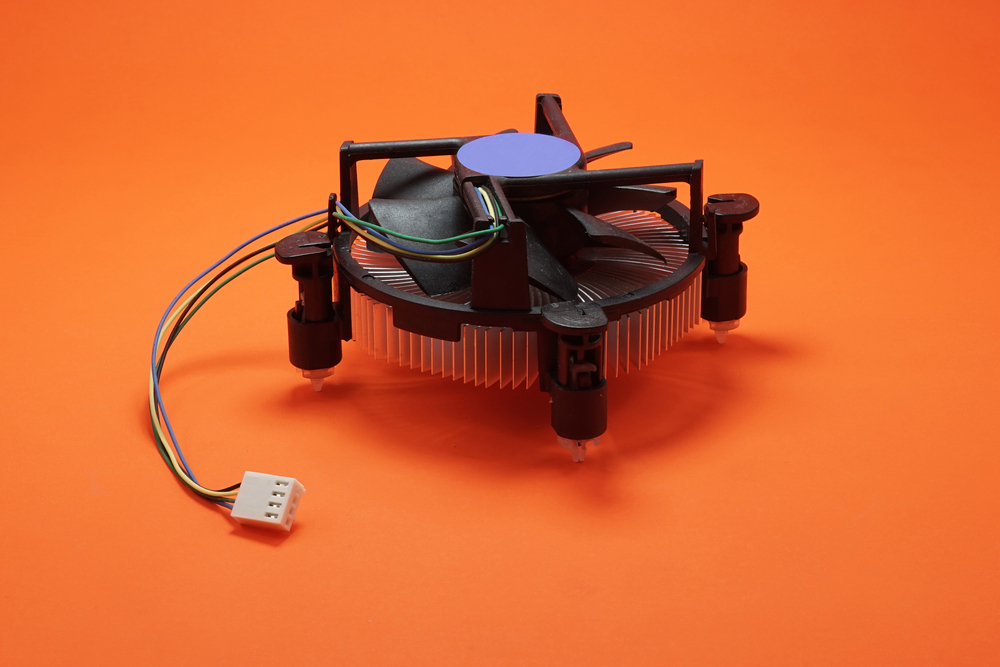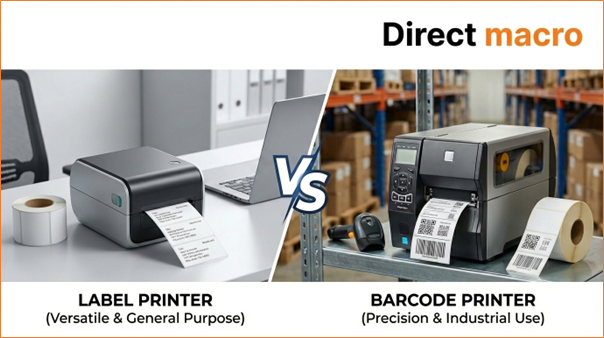What Is Optimal GPU Temp and CPU Temperature Range
Anyone, from a pro gamer to someone who has played their favorite game to completion, knows the amount of heat and noise the gaming PC generates. When there is an emission of heat, there will be talk of optimal temperature ranges, and GPU temp is an important point of it. So, don’t worry if you have just bought or built your gaming PC and have started to experience heat and are distressed about it. We will get it all under control in this article.
We have all been there where you are enjoying your favorite game and are submerged in its captivating gaming experience, and suddenly, a noise increases gradually. How do we know that? Because we are still gamers. Now, we have established the noise is generated by the cooling fans. They have to run more faster to dissipate the heat and, in-process, make the elevated noise.
However, the question remains the same: “How hot is too hot for a CPU?” And do the average CPU temp and the GPU temperature range fall into the same category? To understand a good GPU temp while gaming, we must first understand the importance of optimal temperature inside the CPU.
Is It Dangerous To Go Beyond Normal CPU Temp
Well, a simple answer would be yes. Any machine that gets overheated will lose durability and performance, and CPU and GPU are not different. They are both components of a computer. If the CPU temperature goes extremely beyond the normal GPU temp or a good CPU temp is not maintained, then the chances of critical component failure are highly probable. System damage is first on the list if it overheats.
The overheating comes from the excess workload the CPU is experiencing, and the case is not limited to GPU temp while gaming only. Gaming is one of many instances when you need to worry about both the GPU temperature and normal CPU temp while gaming. Content creation is one more thing that engages both components and can raise the temperature.
Nowadays, many CPUs have built-in protection from heating, where the CPU throttles when experiencing more than normal CPU temp. However, you might not want to take that as a guarantee. In our opinion, the built-in protection might save you from overheating, but some other problems can occur.
To corroborate this, a perfect example could be a CPU bottleneck due to an excessive workload. It causes your CPU to throttle because of the high temperature, slowing it down, making the programs freeze, and unable to process the services anymore.
Serious issues may arise if your CPU or GPU temp deviates from the usual. If your CPU gets too hot, it might cause your computer to crash or suffer irreparable damage, rendering it useless until you buy a new CPU and cooler.
Why is GPU Temp Important?
As we said earlier, optimal temperature, normal GPU temp, or staying in the average GPU temp range, is vital for GPU to perform well like any other machine. Modern gaming has taken the toll away from the CPU in terms of performance demands. Now, GPU provides whatever is required for PC games. However, this was not the way before. This new responsibility on GPU makes the GPU temp rise, and demanding games push the GPU temperature out of the normal GPU temp, increasing the risk of not only component failure but also GPU damage due to overheating.
Modern games and content creation tasks are demanding, and all the strain they put on GPU releases heat. Managing this heat becomes crucial if one wants to see their GPU’s health and longevity. So, the questions of what the normal GPU temp is while gaming, the average GPU temperature range, or how hot is too hot for a GPU remain to be answered. Many people also think that normal CPU temperature while gaming is different from being idle and similar to GPU temp while gaming.
Yes, there are differences between the normal temperatures of both CPU and GPU. Mostly, experts say there is no such thing as a good temp for CPU or good GPU temp but rather staying in the normal range. Now, what is this range? A general rule is 61° C to 75° C, which shall not exceed 85°. To explain it more efficiently, we have tried to break them down into tabular forms.
Celsius Chart of CPU & GPU Temperature
CPU Position |
Ideal |
Good |
Risky |
Danger |
|---|---|---|---|---|
| CPU (idle) | Less than 50°C | Between 50-65°C | Between 65-75°C | More than 75°C |
| CPU (low load) | Less than 70°C | Between 70-80°C | Between 80-85°C | More than 85°C |
| CPU (max load) | Less than 80°C | Between 80-85°C | Between 85-90°C | More than 90°C |
| GPU (idle) | Less than 55°C | Between 55-65°C | Between 65-80°C | More than 80°C |
| GPU (low load) | Less than 75°C | Between 75-85°C | Between 85-90°C | More than 90°C |
| GPU (max load) | Less than 85°C | Between 85-90°C | Between 90-95°C | More than 95°C |
Ideally, staying within the ideal and good GPU and CPU temperature range is sufficient. We have consideration for those who want to know the temperatures in Fahrenheit too.
Fahrenheit Chart of CPU & GPU Temperature
CPU Position |
Ideal |
Good |
Risky |
Danger |
|
CPU (idle) |
Less than 122°F | Between 122-149°F | Between 149-167°F | More than 167°F |
|
CPU (low load) |
Less than 158°F | Between 158-176°F | Between 176-185°F | More than 185°F |
|
CPU (max load) |
Less than 176°F | Between 176-185°F | Between 185-194°F | More than 194°F |
|
GPU (idle) |
Less than 131°F | Between 131-149°F | Between 149-176°F | More than 176°F |
|
GPU (low load) |
Less than 167°F | Between 167-185°F | Between 185-194°F | More than 194°F |
|
GPU (max load) |
Less than 85°F | Between 185-194°F | Between 194-203°F | More than 203°F |
Element That Affect GPU Temp
-
- Engaging in extremely taxing games that focus on graphics processing units
-
- Cooling design quality of the GPU
-
- The room temperature
-
- Your case’s quality
-
- The number of case fans you possess
-
- Level of airflow quality
Knowing The CPU & GPU Temp
We have the ranges now to look out for what is ok and what is not ok. But this data will come in handy when we know what is the temperature of our CPU or GPU. To know the average GPU temp or average CPU temp while gaming, you need to know how to find and read the temperature.
See, Read, and Understand the CPU and GPU Temp
See CPU and GPU Temp Through BIOS
One approach involves venturing into the BIOS, the motherboard’s core software. It is part of the OS that comes when the PC boots up before Windows takes center stage. Here, you’ll find a snapshot of your CPU’s temperature. But there’s a catch: this approach will only provide you with idle CPU temperature. This reading won’t reflect the heat generated when pushing your system with games or intense programs.
Accessing the CPU’s Inner Sanctum
-
- Booting Up: Rapidly tap the DEL, F1, or F2 keys as your computer starts. If not, then consult your motherboard manual for the exact key to enter BIOS.
-
- Navigating the BIOS: Once inside, BIOS might seem confusing. Don’t worry; look for terms like “Hardware Monitor,” “H/W Monitor,” or “PC Health.” Use the arrow keys to navigate the BIOS.
-
- Finding the CPU Temp: Look for the coveted “CPU Temperature” reading. This will reveal the current temperature, but remember, it’s just a starting point.
Read More: How to Check the CPU Temperature: Mastering CPU Care for Optimal Performance
Read GPU Temperature While Gaming
While gaming, you can keep an eye on your GPU temperature, clock, and voltage with the help of the MSI Afterburner application. You may use this to your advantage if you want to know which games cause your GPU to overheat. Additionally, MSI Afterburner allows you to monitor your CPU temperature in real-time.
Some Amazing Free Tools To Consider
The usage of third-party software is thus recommended if you want a more comprehensive picture of the temperature ranges in which your CPUs are operating, both when they are idle and under load during gameplay.
Keeping tabs on your computer’s core temperature is easy with any number of available apps; some even go so far as to track the temperatures of your other hardware. These are the top options:
-
- HWMonitor: https://www.cpuid.com/softwares/hwmonitor.html
-
- HWiNFO: https://www.hwinfo.com
-
- AIDA64: https://www.aida64.com
-
- Core Temp: http://www.alcpu.com/CoreTemp/
-
- Open Hardware Monitor: http://openhardwaremonitor.org/downloads
Things To Do To Lower CPU Temperature
PC Placing
The first step in keeping your CPU from overheating while gaming is to find the sweet spot for your computer tower. Moreover, to keep your normal CPU temperature while gaming, it’s ideal to position your PC close to an open window or patio. Do not place it in a crowded area, such as the corners of the room, where other things like to gather. Placing it close to a window or a corner of a room will also cause it to collect more dust.
Cleaning
To begin, continually clean the case and all of its components. The accumulation of dirt on additives and in the spaces among fan fins will be the motive of a progressively rising processor temperature. This is the maximum major on top of the case.
Adjusting the CPU cooler’s push pins
If your computer is running too hot, try resetting the processor fan’s push pins. Just follow these steps to remove the fan and then put it back in.
-
- Take the fan connecter out of the fan header.
-
- Remove the push pins by rotating a flat-bladed screwdriver in a counterclockwise direction by 90 degrees.
-
- Lift the push pins.
-
- Take the fan out.
-
- Do a full clockwise rotation of the push pins to reset them.
-
- Put the fan back in place and locate the push pins.
-
- To secure, press the push pins in the sequence provided.
-
- Finally, attach the fan’s connector to the fan header.
Thermal Paste
You can apply this via the use of a simple vacuum or spraying a can of compressed air into a tube. Between the processor and the cooler, there are a plethora of minute cracks and bumps. Metal pastes offer the best conductivity, albeit there are numerous types available.
Just don’t set it on the ground; it’s going to inhale all the dirt particles there, turning your PC into a high-priced vacuum.
Central Processing Unit (CPU) Cooler
It is essential to constantly adjust those CPU cooler to the precise processor or socket type, thinking about each mechanical compatibility and performance requirements. Regarding the physical layout, three sorts of coolers are available: low-profile, single-tower, and huge double-tower coolers. These coolers can be used for either air cooling or water cooling.
Copper is an advanced material compared to aluminum, yet it’s also highly priced. Hybrid models regularly employ a copper layer to expend the preliminary warmth, observed with the aid of the utilization of aluminum.
Aside from the cooling performance, it is critical to take into account that noise is the next big thing.
Computer Case
Cases not only own an effective visual structure but also show off enormous variations of their ability to effectively keep the CPU and graphic card at low temperatures and unfastened from dust accumulation. It is essential to optimally arrange all components internally. Installing foam comoponents on the walls and doors can offer surest noise insulation and, in positive instances, even include dirt filtration.
A Case Fan
It is regularly feasible to enhance the performance of the contemporary case fan by optimizing its airflow, resulting in stepped forward cooling for the device. Installing extra case fans can impact overall cooling performance, particularly whilst carrying out overclocking.
Fans are critical for cooling as they consume cool air from the environment and disperse the warmth of PC components. Case fans are available in a variety of sizes, starting at 80mm and going as much as 250mm. Typically, 2 to 3 fans are utilized in this situation, however it is possible to attach a much larger number of fans in the series.
Proper Cable Management

Insufficient cable management is often disregarded but significantly impacts the rise in CPU/GPU temperatures. Impeding the airflow surrounding the GPU will hinder the effectiveness of the open-air cooling system, preventing it from operating at its highest efficiency. Combine this with high summer temperatures and a deficiency of adequately adjusted case fans, and the temperatures of your hardware will rapidly increase.
Regardless of whether you are constructing a budget build with a $300 budget and want to know what should you put in your gaming PC or a high-end gaming rig costing $1000, it is crucial to prioritize wire management. Accessories like cable management arm has the potential to enhance the efficiency of your gear significantly.
Overclocking
Overclocking is a fast and simple method to raise the internal temperatures of your electronics. You are exerting maximum physical force on your components, and as we have previously clarified, further strain directly results in heat generation. Unbeknownst to many, contemporary hardware often has pre-installed overclocking profiles. GPUs and CPUs can be provided with an overclocking (OC) profile, which involves pushing the component beyond its normal operating limits.
During the warmer months of the year, changing your overclocking profile to default settings may be beneficial, particularly if you are encountering higher average temperatures. This task can be accomplished through the manufacturer’s utility software or the BIOS.
FAQs
What should my CPU temp be?
At “idle,” your central processing unit isn’t actively processing any tasks; for example, it’s merely displaying the desktop. Temperatures ranging from 30 to 60 degrees Celsius are usual throughout this period. The safe operating temperature range for a central processing unit (CPU) under load (such as intense gaming or multitasking) is 60–85°C.
*Note: See the table above for Fahrenheit temperatures.
What should my GPU temp be?
A good GPU temp during gaming often falls between the range of 70-85°C (158–185°F). Typically, NVIDIA GPUs have higher operating temperatures than AMD GPUs. Going slightly above this range is not a major issue to worry about. However, extended exposure to elevated temperatures on your graphics card may harm or diminish lifespan.
How hot should my CPU get?
Your CPU should stay between the range of 60–85°C and should not cross the limit of 85°C. You cannot judge it by placing your hand, feeling the heat, and figuring out that it is beyond the limit. By keeping regular checks, you can know how hot your CPU is currently by feeling the heat and assessing it.
Conclusion
Although many variables might affect what is considered a “normal” CPU temp or GPU temp, you must know your system’s thermals. It does double duty by extending the life of your hardware and guaranteeing top performance. Don’t forget that the CPU is your PC’s brain. And it shares the same dislike for overheating as our brains! Graphics processing units (GPUs) get a real workout when you play games and do other visually appealing tasks. Knowing and controlling its temperature allows you to get the most out of it and extends its life expectancy. Keep in mind that your CPU and GPU will run more smoothly if you keep them cool. Follow Direct Macro for more insights, latest news, and quality products.
Do you need advice on buying or selling hardware? Fill out the form and we will return.

Sales & Support
(855) 483-7810
We respond within 48 hours on all weekdays
Opening hours
Monday to thursday: 08.30-16.30
Friday: 08.30-15.30









